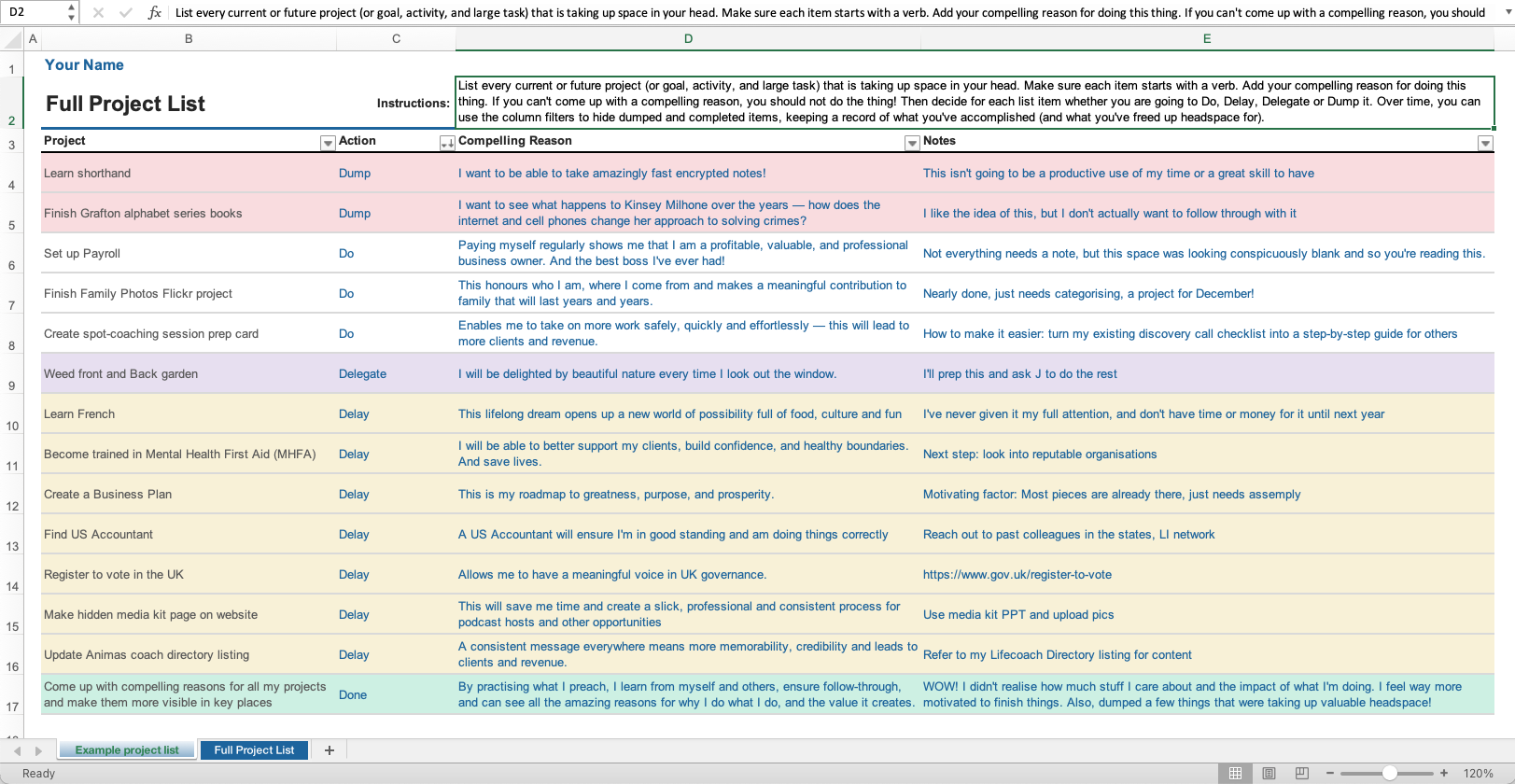Make the most of your time
Follow this simple, 3-step process to increase your productivity and create more time for doing the stuff you love:
Honestly evaluate where your time goes
Create more time for what’s important
Figure out the best ways to use all the time you create
Read more about each step and get the templates to help you along the way.
1. Evaluate where your time goes
We all have ideas in our heads about where our time goes, but until we actually sit down and assess the current reality, this is just a story we’re telling ourselves about our lives. It may or may not be true.
That is, when we know how our time is spent, we can take effective action.
We do this through non-judgemental noticing. The non-judgemental part is important here. We are gathering information, not grading our work.
To get started with this, download the Time and Energy Tracker below to reflect on how your time is spent during the day. The process itself is simple:
After completing an activity, write it in the appropriate space on the sheet.
Use a highlighter to mark your energy as high (green), medium (yellow), or low (red) during that time.
Review the week and note any patterns. For example, you may find that the afternoons are low energy zones, regardless of the activity. Or that a particular activity is energy-replenishing, regardless of when you do it.
This process will give you insights about where your time actually goes and how your activities interact with your energy levels. As a result, you will be able to plan your week more strategically.
2. Create more time for what’s important right now
This step is all about getting every project, idea, task or activity out of your head and into a place where you can look at things objectively, organise, and streamline. This process allows you to be ruthless with your time…and feel good about it.
This step will help you clear a path for better thinking in all that you do. After listing every project, idea, activity or task that’s taking up space in your head, you’ll assign a label of either Do, Delay, Delegate or Dump. There is no option to Dither or Debate!
By Delaying items, you mentally free up rent in your head to focus on what you want to Do. By Delegating or Dumping items, you increase capacity to do the things you want right now or in the future.
Doing this step is an absolute game-changer and a time-saver. It’s also very rewarding to see exactly how many things were up in there, just pointlessly taking up space. And are no longer doing so.
3. Make the most of the time you create
What good is all this extra time if you don’t know what to do with it?
You need to have a plan for what you do with your day and your week.
Here is a five-step timeblocking process to ensure your productivity success, week after week.
You’ll start each week by answering these five questions:
What results do I want by the end of this week?
What tasks will I need to do to achieve these results?
How much time will each task take?
Where on my calendar does each task go?
How can I ensure that I show up for each task?
At the end of the week, you’ll do a mini-review of how it all went (question prompts are included in the template). It's especially important to keep in mind any struggles around follow-through and your thoughts about the work.
As I've been doing this process for a while, I noticed that I've consistently overextended myself (eg., scheduling too many 'chunky' tasks too close together). I use this reflection to improve my success in the following week. For example, I now schedule and practice multiple forms of self-care, every day of the week. Therefore, my tasks — in between coaching calls, meetings and deep work blocks — are things like walks, creating visual quiet (decluttering, organising), weights and even a nap when needed!
I originally learned this third step from a fellow coach, Cristina Roman, who specializes in procrastination and productivity. I’ve adapted the process and created this template with instructions to help you do this on your own.
Put it all together
I’ve created three templates to help you with these steps. Over time, this process will become much more natural to you and you may not even need the templates. Or you may find ways to improve the process for yourself and others. That’s fantastic and I’d love to hear about it!
To get started with this 3-step process for feeling like a productivity professional, download the templates for assessing, prioritising, and planning your time:
-
1. See where your time and energy goes
By seeing how your time and energy are spent during the week, you’ll gain insights that can help you plan your activities more strategically.

-
2. Make time for what's important to you
Get every project out of your head and onto a master list where you can decide whether you want to Do, Dump, Delegate or Delay it. You’ll clear a path for better thinking in all that you do.

-
3. Make the most of your time
By deciding what results you want and planning your week effectively, you’ll create clarity and focus on the daily. Get more done, feel better about it, and have more capacity for other things too.



